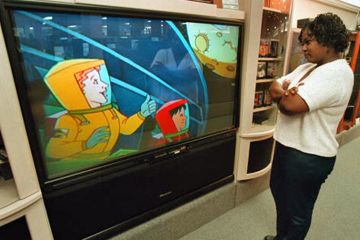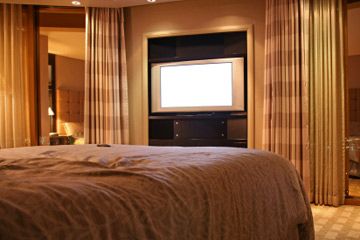Display resolution isn't the only thing that will make a difference in your viewing experience. Dynamic range, contrast and color quality all play a role. While there has been a general trend towards cramming as many pixels as possible onto TV screens, there have also been updates in other areas.
1. Screen Size
A larger screen can hold more visual information, and this is why bigger screens tend to boast 4K capability. The downside is that with "standard" video content — say, DVD quality, not even Blu-ray — the image on the screen isn't going to look all that great.
To support such a large screen, you'll need high-resolution source material.
2. Aspect Ratios
These days, much of the video being streamed or watched via cable is in the 16:9 format. This means it's a long-ish, rectangular picture, and most TVs are shaped to suit that shape best.
However, the aspect ratio of various shows and movies is sometimes different, which means that there may be unused space on the top or sides of the screen (usually black bars.)
3. Backlight
Cutting-edge TVs use LED and OLED technology, which allows for a very precise degree of illumination behind the screen. This helps greatly with color quality and contrast (keeping the right balance between the light and dark parts of the image.)



